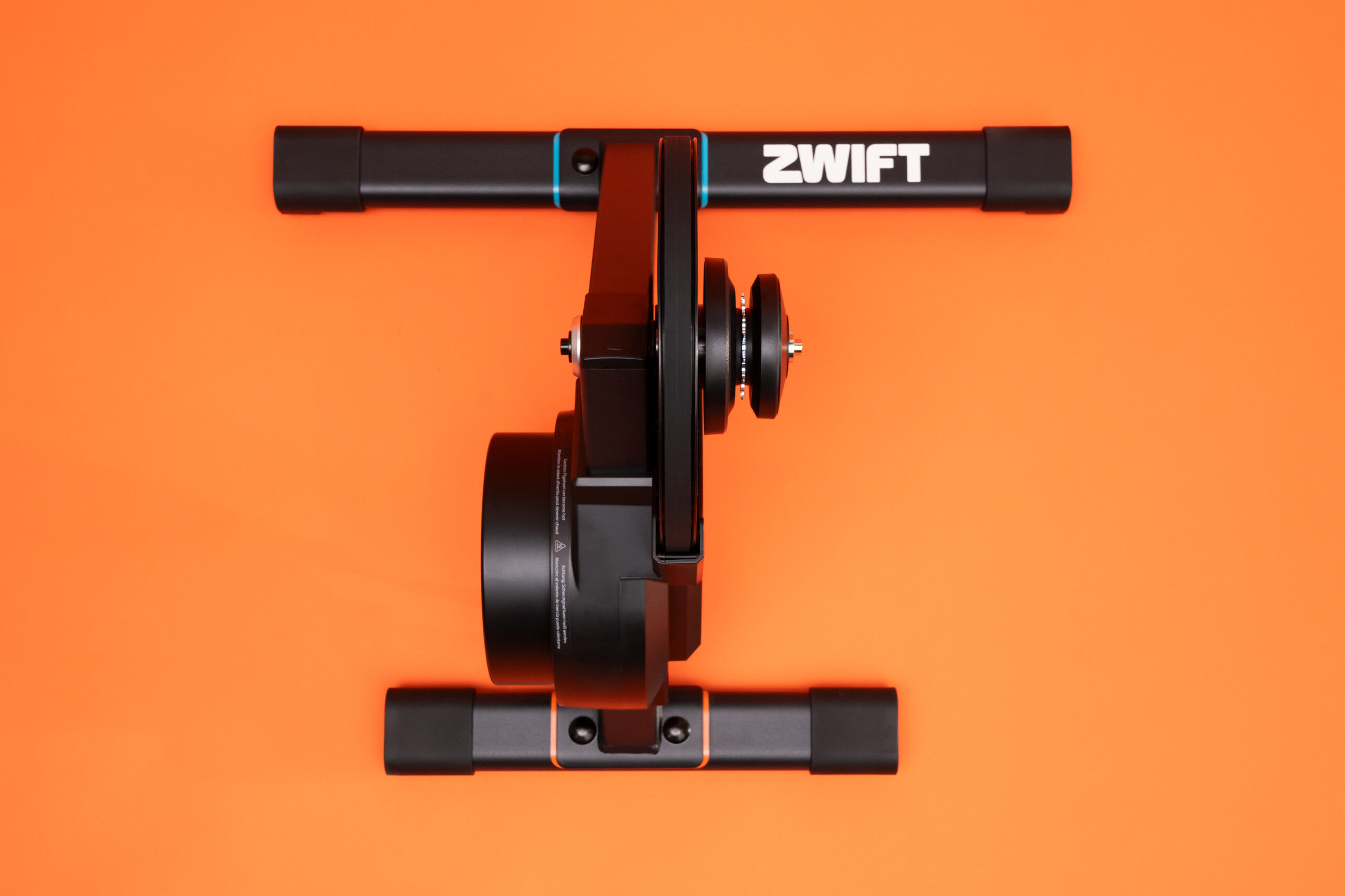Zwift is rethinking the drivetrain for trainer use in an effort to fit more bikes, offer a quieter experience, and make it easier than ever to hop on and ride. The whole premise revolves (literally) around the Zwift Cog which is available as an update for existing Hub trainers, or comes complete with the new Zwift Hub One.
Where the original Zwift Hub would run a standard cassette for the gears, the Cog replaces that with a single gear. Then through the magic of Zwift, that cog is able to virtually provide 24 different speeds, which are optimized for your front chainring(s) to provide a consistent feel from bike to bike.
Why Virtual Shifting?
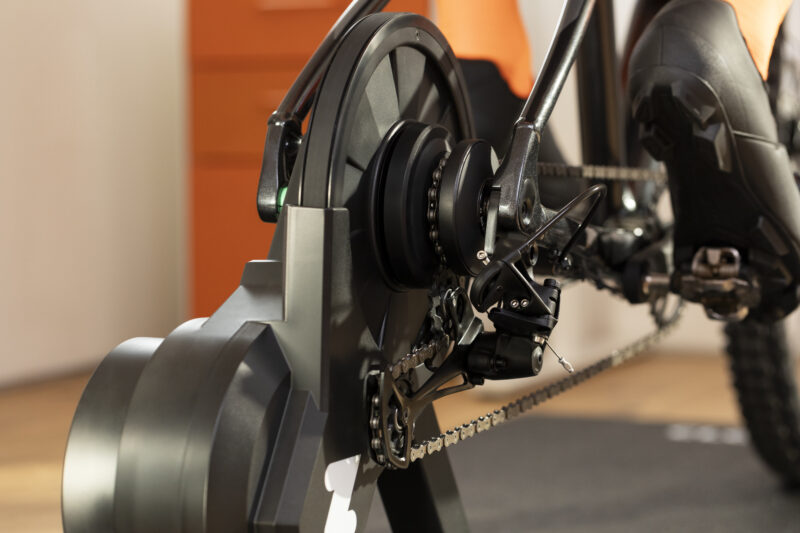
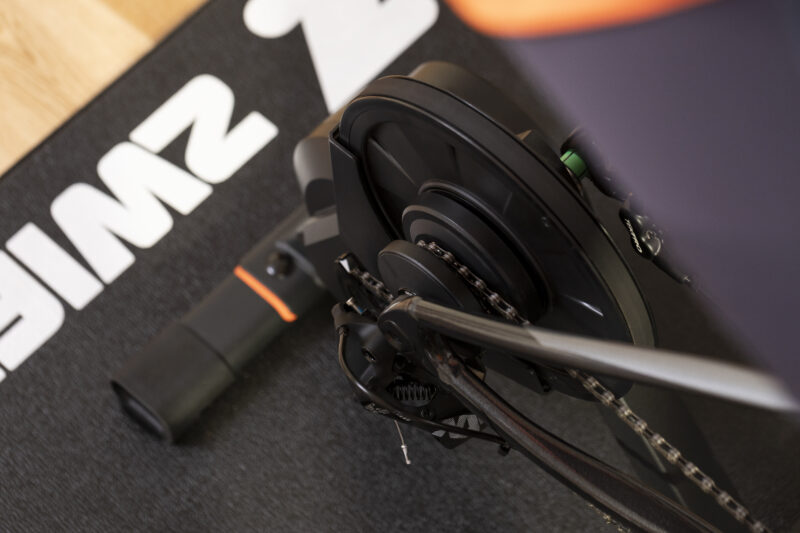
At this point, you’re probably wondering why you would want virtual shifting. We certainly were. But as you break it down, it starts to make a lot of sense.
One of the biggest benefits to the Cog, is that on a direct-drive trainer like the Hub, you don’t have to change out the cassette if you have multiple bikes you want to use on the trainer with different drivetrains. Zwift says the Cog is compatible with most bikes with 8-12 speed drivetrains (sorry Ekar fans, 13-speed is not supported at this time), which means you can just pop your bike on the trainer and ride without having to swap cassettes. Zwift states that while 11-speed cassettes have been the most popular option for the HUB, 54% of Hubs were sold with other speed cassettes highlighting the need to cover multiple drivetrains.
1 x 24 Speed Virtual Drivetrain
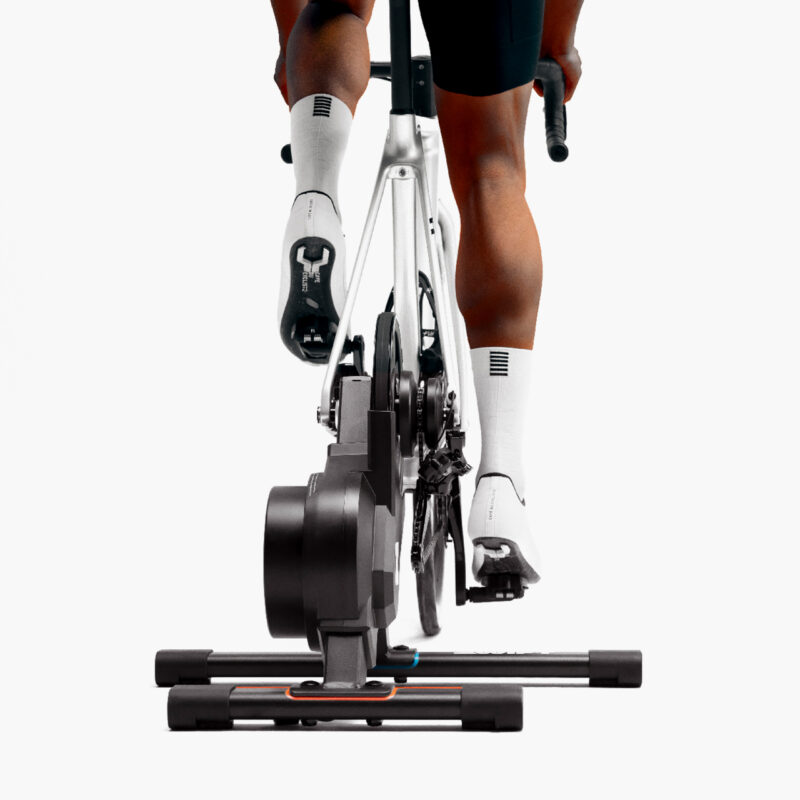
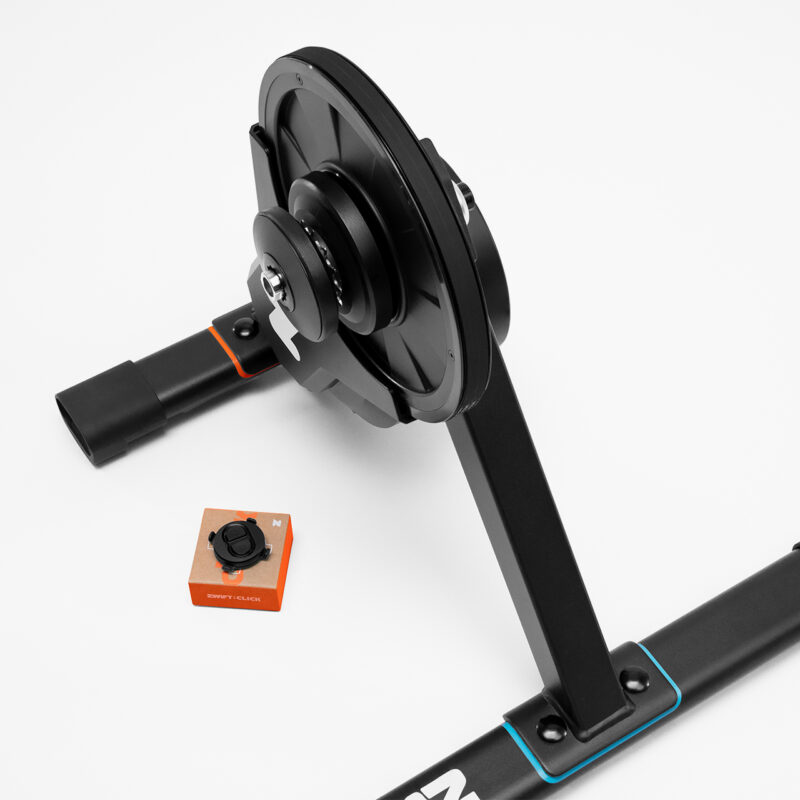

Obviously, you still want gears for virtual riding programs like Zwift, so the Cog provides 24 different ‘gears’, which are shifted with either the Zwift Click, the Zwift Play controllers (for dropbars), or a combination of both. While using Zwift, the current gear will be displayed on the screen so you know where you are in the 24-speed ‘cassette’. We’re told that this replicates the range of a 2 x 12 drivetrain, while eliminating some of the overlap you’d typically find on a double and replacing that with additional lower gears. If you’re riding a 2x front chainring setup, it’s recommended that you ride in the smaller ring.
Since there aren’t any physical gears to shift back and forth between, Zwift claims that the virtual shifting is also a lot quieter. Modern trainers have gotten pretty quiet, so at this point the drivetrain noise from a full-gas effort can be one of the loudest parts of the experience. Hub One and trainers with the Cog should be quieter.
There’s also no chance of dropping a shift or dealing with slow shifting with the Cog. Shifts are nearly instantaneous (even under full load), and there are bumpers on either side of the cog to prevent chain derailments.
According to Zwift, the Hub will automatically calculate the real gear ratio of the bike mounted to it at the start of every ride using cadence and flywheel speed. That means that even bikes with small chainrings will have the proper in-game gearing that will prevent spinning out on flats or descents. This setting will only take place at the start of every ride, and it’s what allows all of the different bikes to feel the same on the trainer.
How to Get Virtual Shifting on Zwift
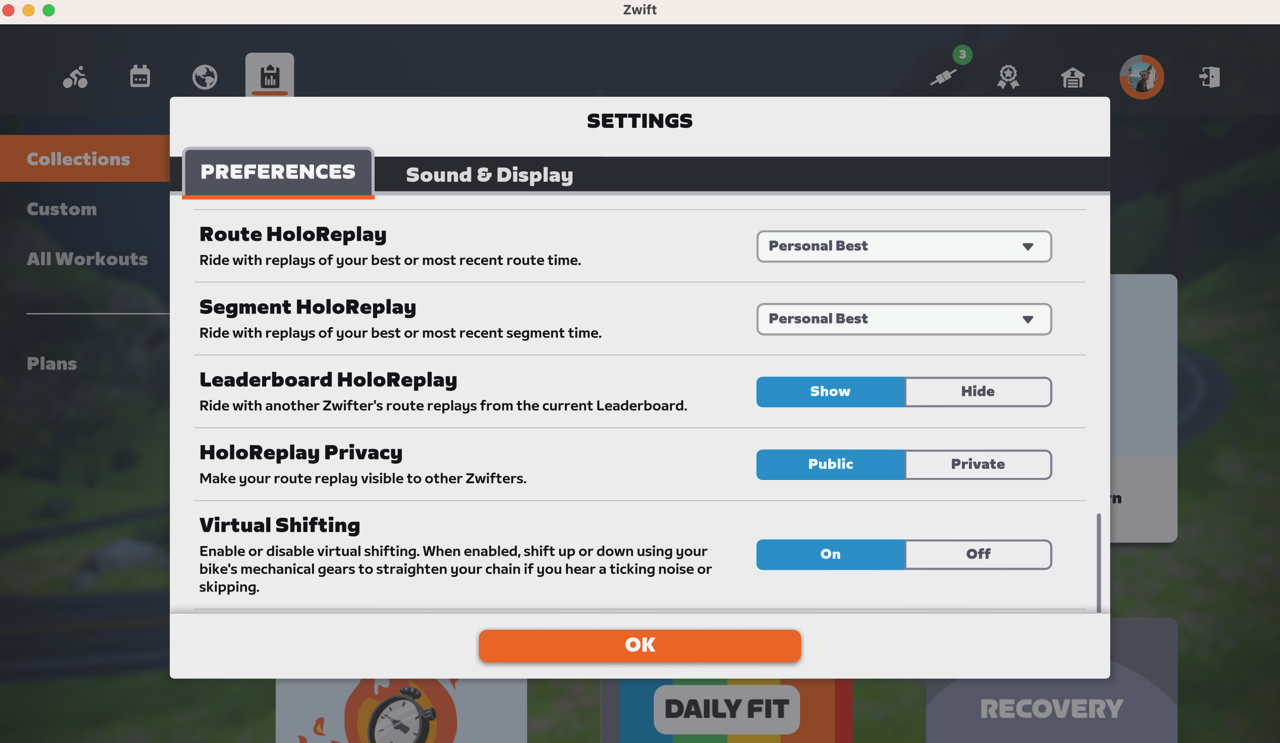
To start, you’ll need to make sure you’re running the latest Hub firmware – version 5.2.0 or later (With the Zwift game off, launch the Zwift Companion App and go to more > hardware. Select your Hub and update firmware). You’ll also need to be on the latest Zwift game build – version 1.49 or later. Virtual shifting will turn on by default if you have the Zwift Hub paired with the right firmware and a shifting device connected. If it isn’t working or you want to turn it off, you can find a toggle in the settings menu.
How to Shift in Zwift
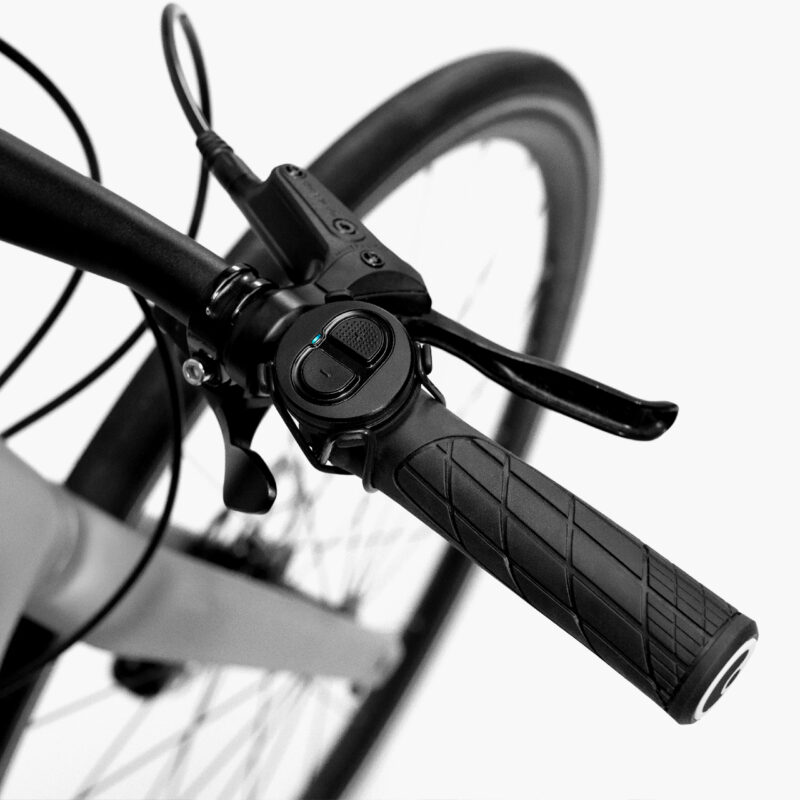
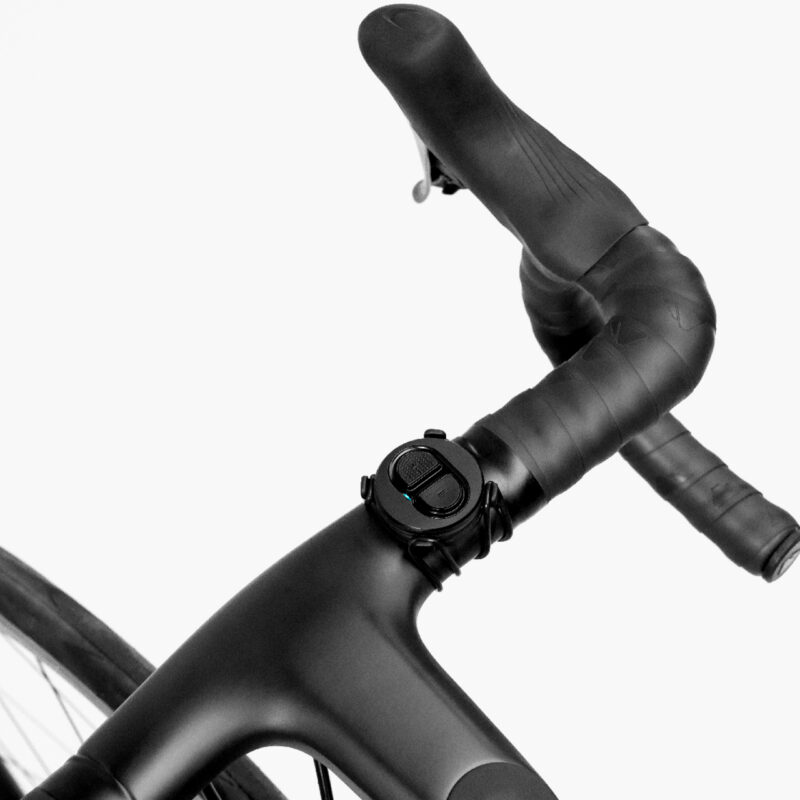
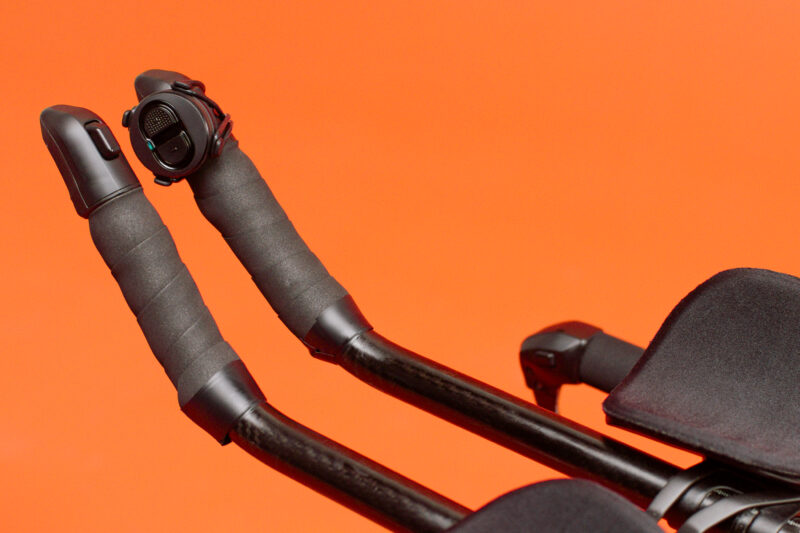
The shifting is virtual, so you won’t be using your bike’s shifters. Instead, you’ll have a choice of the Zwift Click, the Zwift Play controllers, or both. Zwift Click is a small, simple button pod that you can attach almost anywhere. It can be used on aerobar extensions, dropbars, flat bars, and more.
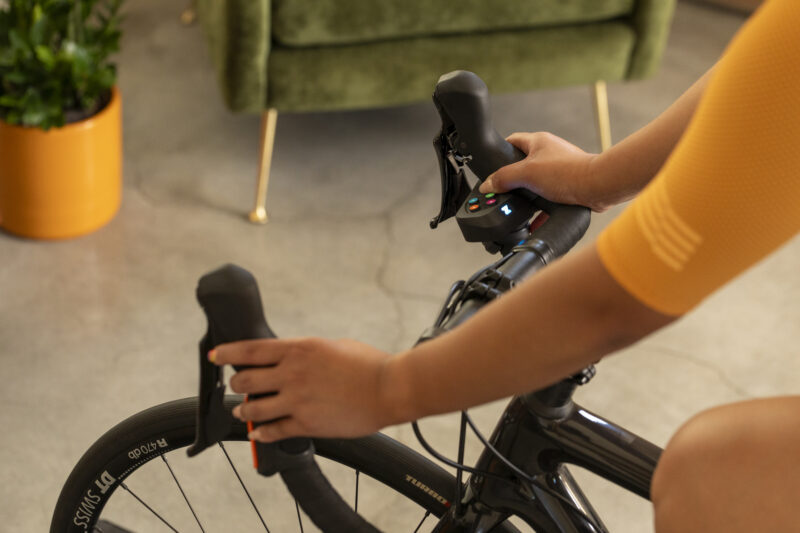
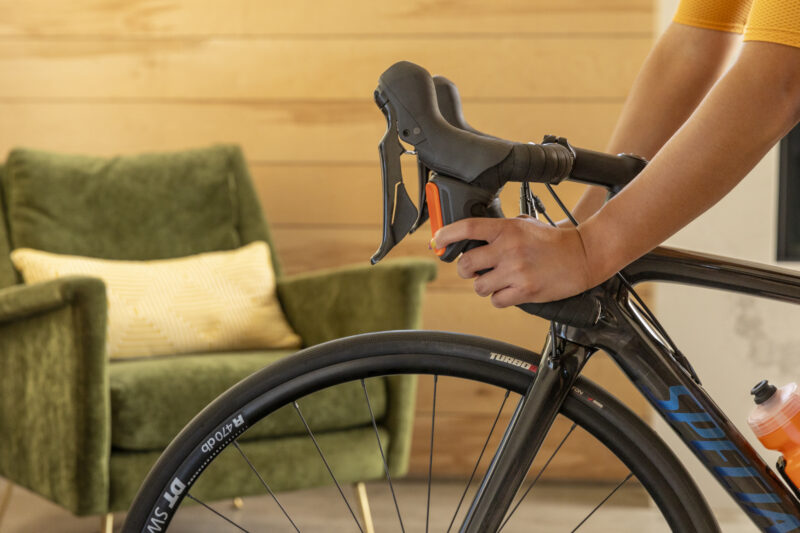
If you’re running a dropbar bike, you can take advantage of the Zwift Play controllers which have buttons that can be used for shifting complete with haptic feedback.
Want more shift options? Use the Play controllers on the dropbar, and add the Click somewhere else – like the top of the bars. Both the Play controllers and the Click can be paired at the same time.
Pricing & Availability
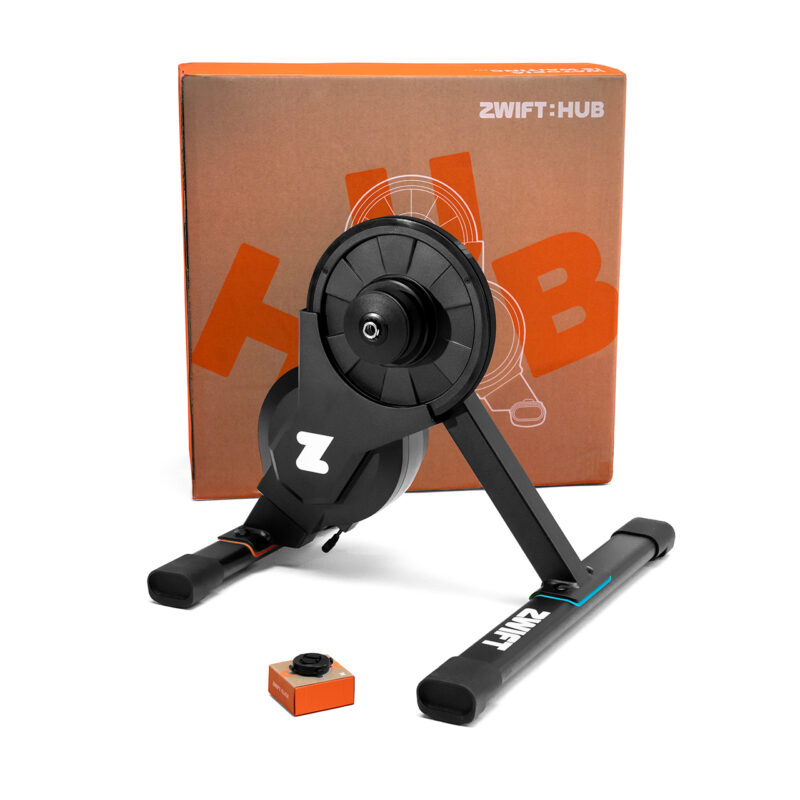
Starting today, you can buy a Zwift Hub One trainer with the Zwift Cog pre-installed and a Zwift Click shifter for $599. Not into the virtual shifting ideal? You can also purchase the Zwift Hub Classic with a cassette of your choice (8, 9, 10, 11, or 12sp) for $599. Both versions of the trainer also include a 1-year subscription to Zwift making it even more appealing.
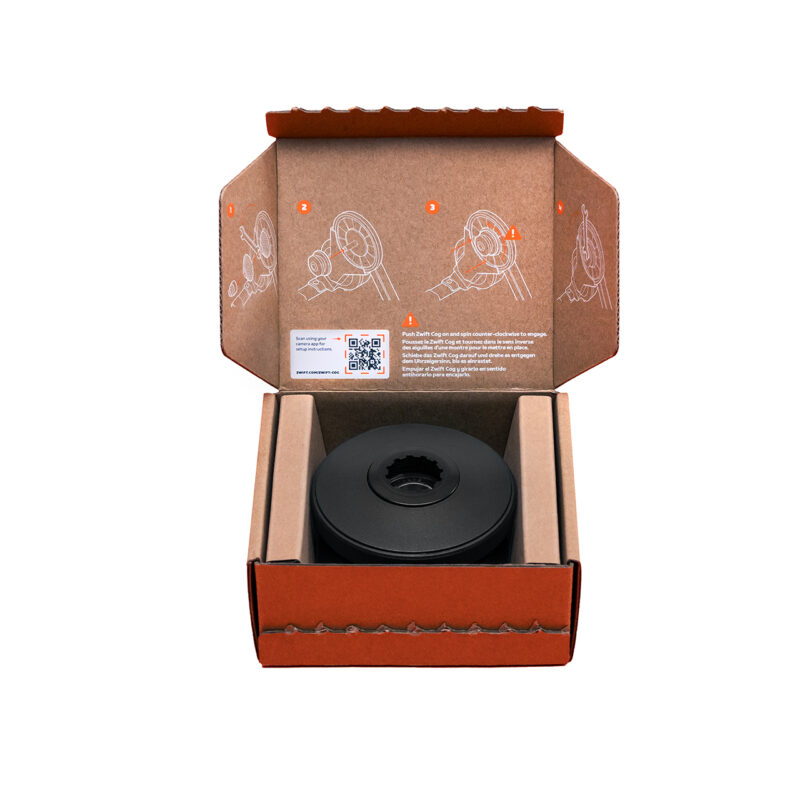
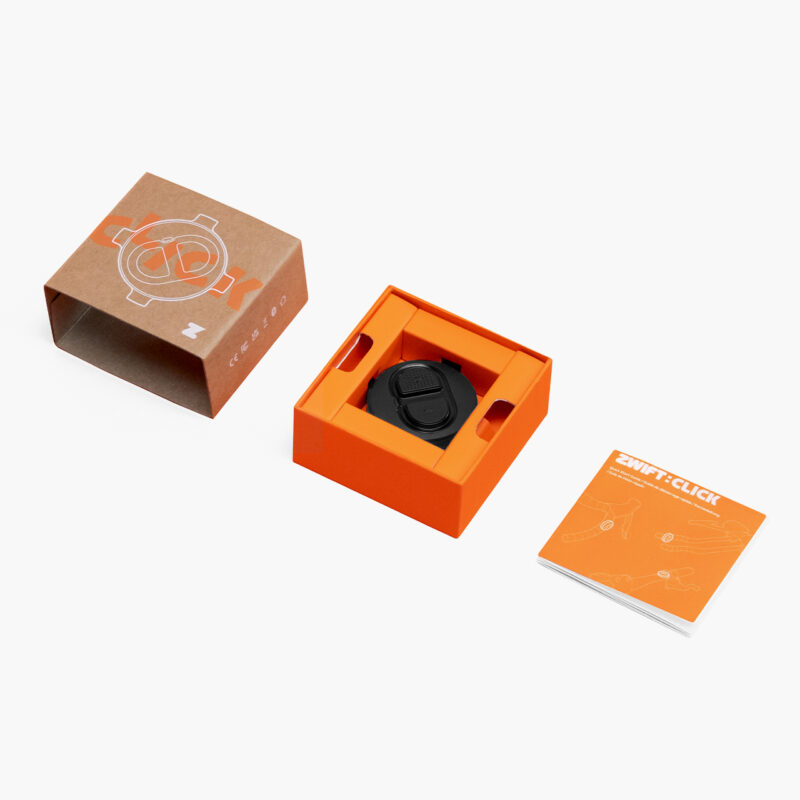
Already have a Zwift Hub Trainer but want Virtual Shifting? For you, Zwift will offer the Zwift Cog and Click upgrade kit which will sell for $79.99. This kit is only compatible with the Zwift Hub, and installs without special tools.
Ride on.
